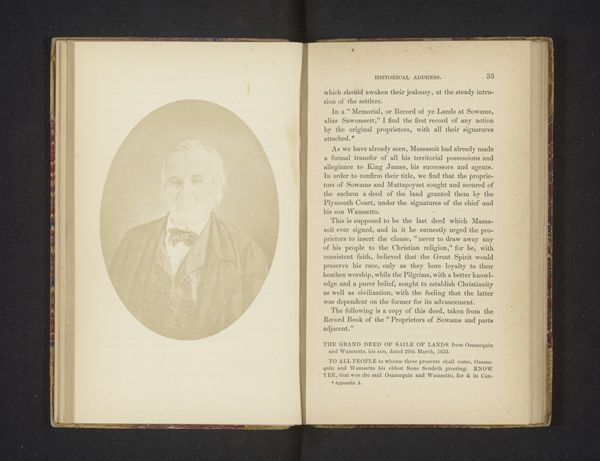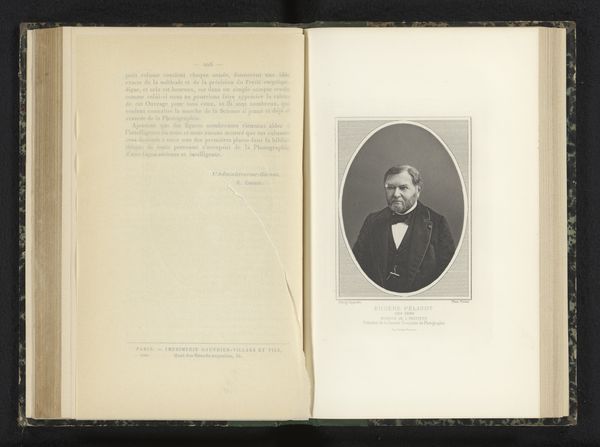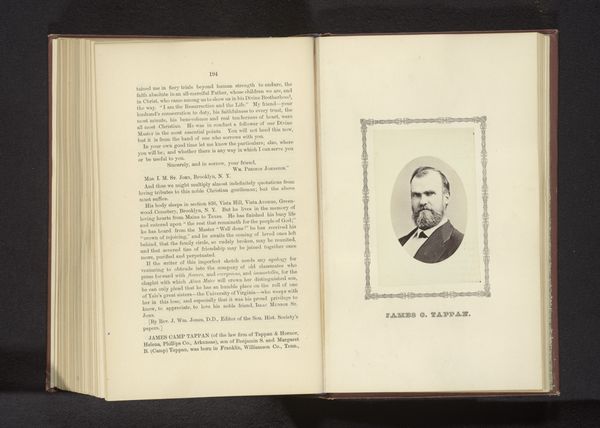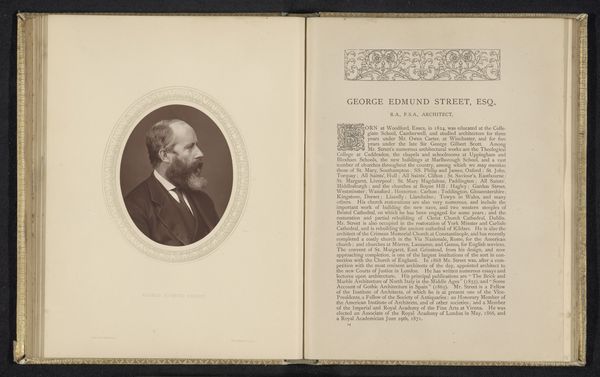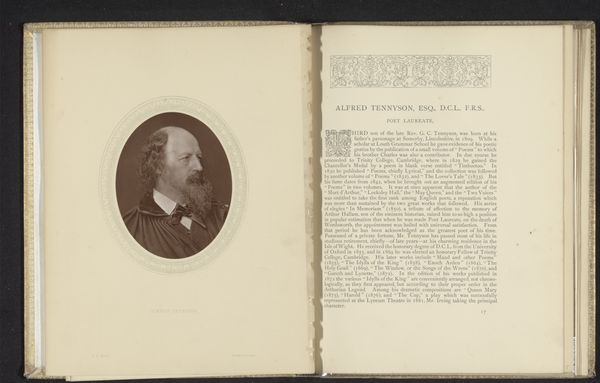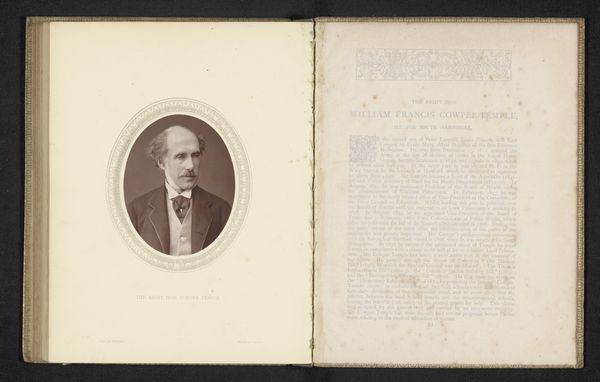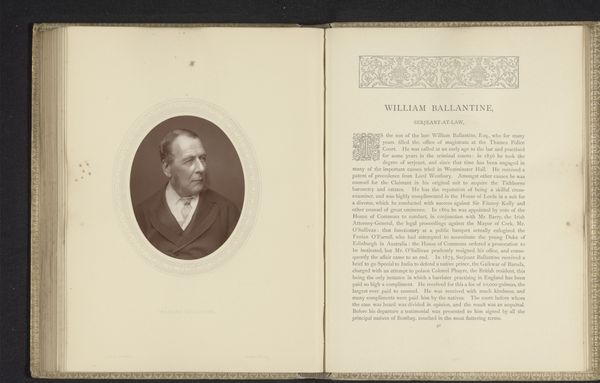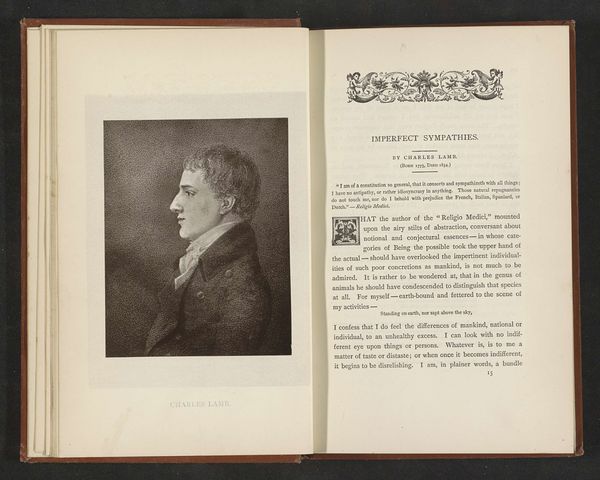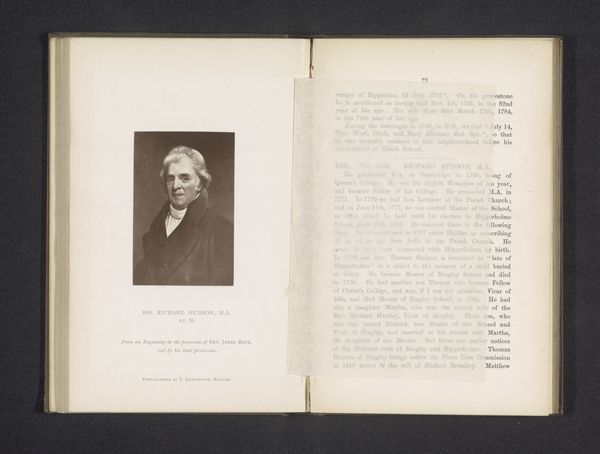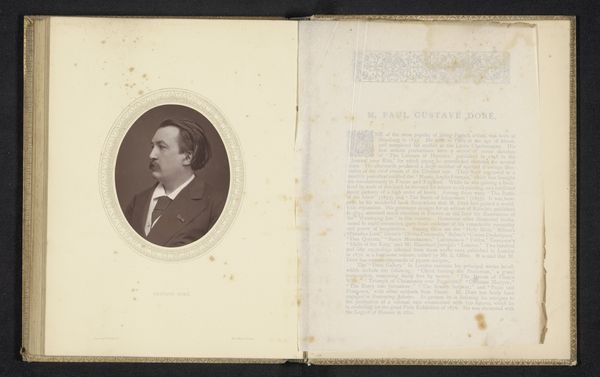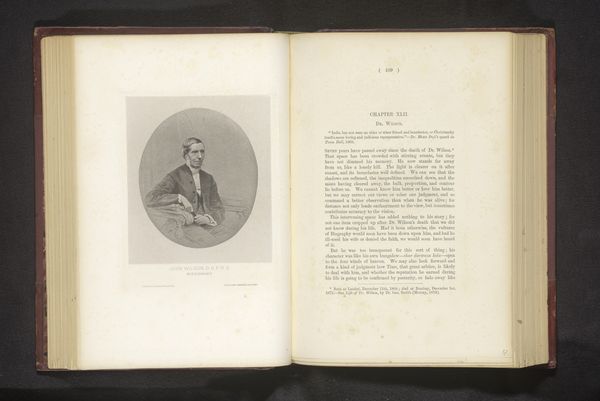
print, photography
#
portrait
# print
#
photography
Dimensions: height 117 mm, width 83 mm
Copyright: Rijks Museum: Open Domain
Editor: Here we have "Portret van George Dixon," a photographic print made before 1884 by Joseph Norris. It's fascinating how the monochromatic tones and sharp focus draw my eye directly to Dixon’s face. What can you tell me about its composition? Curator: Looking at this print, it’s evident that Norris uses tonal gradations to model Dixon’s face, structuring our perception of depth and volume. The almost mathematical division between light and shadow serves to describe not only his physical presence, but also contributes to the work's solemn character. The photographer carefully arranges the framing around the subject, using line and texture to amplify Dixon's image. Have you noticed how the textured border around the photograph contrasts the smooth surface of the print itself? Editor: I see it now; the border acts almost like an additional frame within the frame! What's the significance of this inner border, do you think? Curator: By emphasizing flatness while simultaneously evoking depth through the portrait itself, the artist uses inherent tensions to activate the work. Notice that the meticulous texture around the central image invites viewers to closely study surface variations and, in turn, reflect upon the artistic choices made during the printing process. Norris prompts contemplation through subtle yet significant juxtaposition of material characteristics and carefully planned compositions. Editor: It's amazing how focusing on just the structure and composition can reveal so much about the artist’s intention. I never would have considered the tension between flatness and depth without your perspective! Curator: Paying close attention to an artwork's structure will encourage new ways of understanding creative expression.
Comments
No comments
Be the first to comment and join the conversation on the ultimate creative platform.
